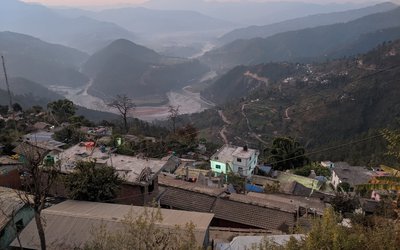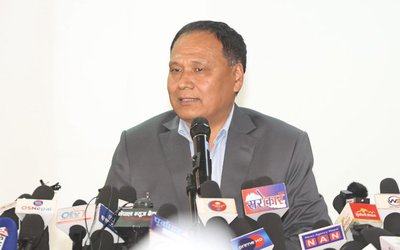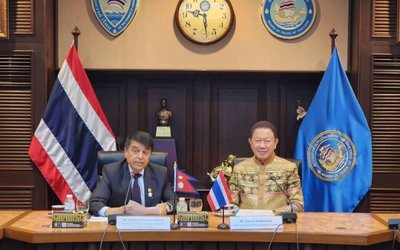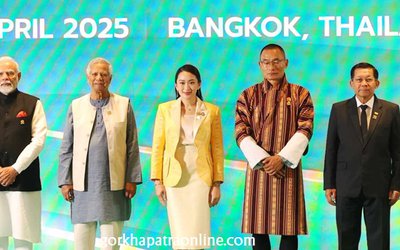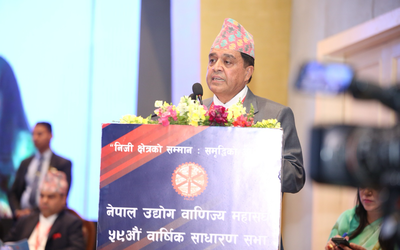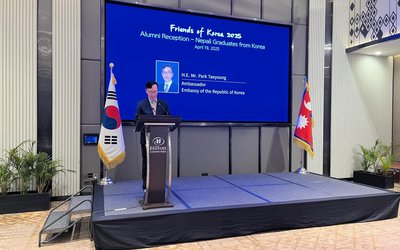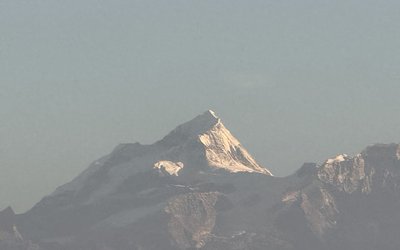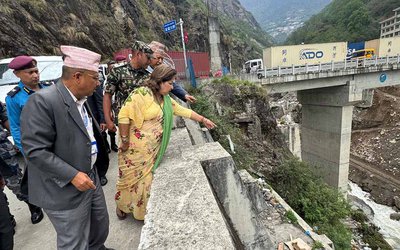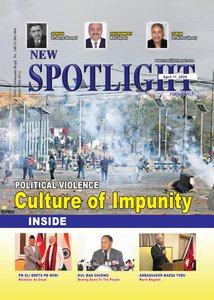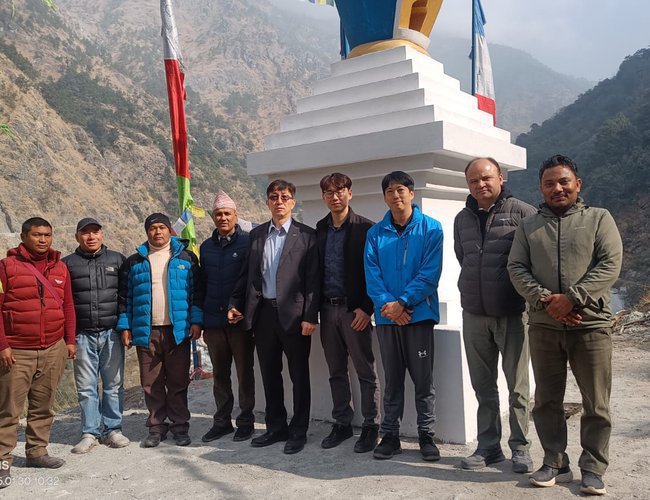
Numerous hydropower projects are currently in progress, with funding from Korean companies in collaboration with Nepali power developers and the involvement of multilateral agencies. The UT-1 project stands out as the first to dedicate a significant amount of funds towards improving the livelihoods of local communities.
As part of its corporate social responsibility, the Nepal Water And Energy Development Company, owners of the 216 MW UT-1 Hydropower Project, allocate a substantial portion of their budget each year to community development.
Nepal Water & Energy Development Company Pvt. Ltd. (NWEDC) is a specialized energy utility company focused on hydropower development in Nepal, established to attract foreign investment in the sector.
The majority ownership of NWEDC is hel
d by Korean strategic investors, with 50% owned by Korea South East Power Company (“KOSEP”), 15% by Daelim Industrial Co. Ltd. (“Daelim”), and 10% by Kyeryong Construction Industrial Co. Ltd. (“Kyeryong”) (collectively known as the “Sponsors”). The local partner, Bkesh Pradhanang, holds a minority stake in NWEDC.
NWEDC serves as a Special Purpose Vehicle for the development of the Upper Trishuli-1 (UT-1) Hydroelectric Project by KOEN, KIND, IFC (World Bank Group), and the local partner.
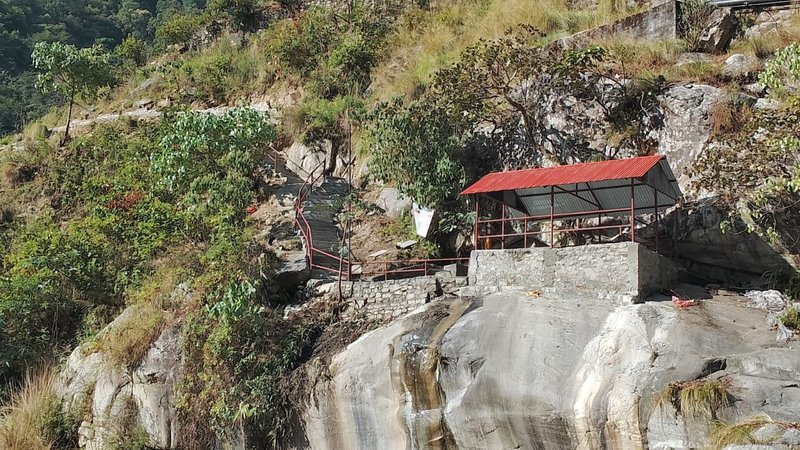
The UT-1 Hydroelectric Project, with a capacity of 216 MW, is situ
ated in the Rasuwa District of Nepal and is expected to generate 1456 GWh of hydroelectricity annually for supply to the National Grid of Nepal.
Approximately 170 million rupees have been utilized through community support in the affected areas of the ongoing construction of the Upper Trishuli-1 hydroelectric power project with a net capacity of 216 MW in Rasuwa district.
The project promoter, Nepal Water and Energy Development Company Pvt. Ltd., has been providing assistance to the affected areas through various programs such as education, health, drinking water, road infrastructure, cultural initiatives, relief distribution, livelihood improvement, and income growth under social responsibility and community planning programs.
The project, supported by direct foreign investment from Korean companies, includes the construction of structures such as dams in Hakuma Project in Amachhodingmo Rural Municipality-1 and underground power plants in Uttargaigaon Municipality-1 in Rasuwa. The electricity generated will be used for domestic consumption, making Upper Trishuli-1 the largest project under construction with direct foreign investment.
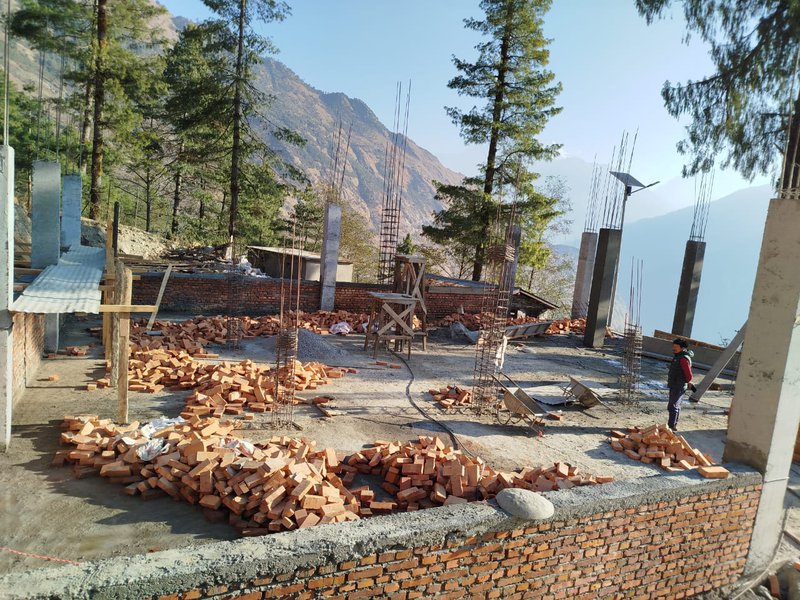
In the area severely impacted by the Binakasari earthquake of 2072, the company carried out various initiatives including distributing relief materials, constructing temporary housing, building schools and health facilities, conducting helicopter rescues, organizing health camps, and other programs for earthquake victims.
This project in Nepal marked the first time the company independently and proactively engaged with tribal communities affected by the project, ensuring they were well-informed.
A specific tribal community plan was implemented, taking into account the community's background, environment, and cultural characteristics. A separate budget was allocated for community-chosen programs, with 2.5 million rupees already spent.
The company's CEO, Byong Soo Min, emphasized the importance of the community support program in addressing economic and social issue , employment, and livelihood improvement in the project-affected area.
He highlighted the project's commitment to ongoing support programs tailored to the local residents' needs and priorities.
The project has completed the construction of the Beli Bridge in Hakubeshi over the Trishuli River at a cost of over 70 million rupees. This bridge has made it easier for the residents of Hakukshetra in Ward No. 1 and 2 of Amachhodingmo Rural Municipality to access the road, particularly towards the headquarters, Nuwakot, and Kathmandu.
The bridge is also being used for transportation for construction work, with 18 lakh 57 thousand rupees spent on road construction in the affected areas. An additional 70 lakh rupees have been allocated for the construction of open roads.
To improve education in the affected areas, school buildings and educational materials have been distributed, and one teacher has been provided to each of the three schools in Haku since 2018. Following its social safeguard policy, the project is supporting the construction of buildings and other programs to preserve and promote the cultural traditions of the tribal tribes in the region.
- NEPAL-THAILAND: Joint Business Council
- Apr 13, 2025
- BIMSTEC SUMMIT: Nepal’s Stand
- Apr 11, 2025
- IME GROUP: Expands Into Paper Industry
- Mar 24, 2025
- CPN UML: Instigated By India
- Mar 23, 2025
- ADB’S CHIEF ECONOMIST: Nepal Reduces Poverty
- Mar 11, 2025
